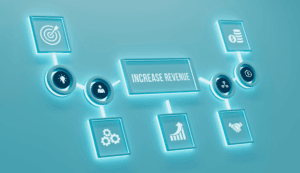
Provided with these figures, we can calculate the interest expense by dividing the annual coupon rate by two (to convert to a semi-annual rate) and then multiplying by the face value of the bond. For example, a bank might lend $1 million in debt capital to a company at an annual interest rate of 6.0% with a ten-year term. Suppose you run a small business and you have two loans that are helping finance the enterprise. The first loan has an interest rate of 5% and the second one has a rate of 4.5%.

How to Calculate Cost of Debt
Moreover, the capital structure weights used in the WACC formula must represent the market values of debt and equity accurately. Using book values instead of market values can distort the calculation, especially in volatile markets. Therefore, ensuring that all input values are precise and reflective of current conditions is essential for obtaining a WACC that truly represents the company’s cost of capital. Understanding the proportions of equity and debt is vital for businesses, as it impacts their financial strategy and risk profile. Companies with a balanced capital structure can optimize their WACC, making it a key factor in investment decisions and valuation.

Tax Implications and Cost of Debt
Calculate the cost of debt (after tax) if the debentures are issued (i) at par (ii) at a discount of 10% and (iii) at a premium of 10%. As we learned from our pre-tax calculation, our effective interest rate is 8%. If you’re a small business owner, you know that borrowing money is both inevitable and essential. You need working capital to get your business off the ground or grow it to new heights. The market value of debt is Airbnb Accounting and Bookkeeping $122.4 billion and the market value of equity is $2,500 billion. The WACC represents the minimum return that the company must earn on its investments to maintain its value and satisfy its providers of capital.
- A higher cost of debt means that the company has to pay more to service its debt, which reduces its net income and cash flow.
- The firm’s overall cost of capital is based on the weighted average of these costs.
- The market value of debt is $122.4 billion and the market value of equity is $2,500 billion.
- The after-tax cost of debt is the interest paid on debt less any income tax savings due to deductible interest expenses.
- A lower WACC indicates a more favorable financing environment, suggesting that a company can attract investment at a lower cost.
- There is no algebraic solution to the above equation, but we can employ the hit-and-trial method.
Cost of Debt Explained
- This cost is influenced by the interest rate, which is the percentage of the principal amount that the borrower must pay over a specific period.
- For example, if a company has a cost of debt of 12% and a ROE of 8%, then it can increase its ROE by reducing its debt and relying more on equity financing.
- The YTM is a more comprehensive measure as it considers both the interest payments and any gains or losses the company may experience when repaying the debt.
- This calculation helps businesses understand their minimum return requirement to satisfy investors and creditors.
- However, taking on debt increases the company’s risk of bankruptcy if it fails to meet its debt payments.
- Understanding both CAPM and WACC is essential for financial modeling and investment analysis.
Tax – strictly, the corporation tax rate – can help decrease the cost of debt financing in most countries. If the cost of debt will be more than 10%, the expense may not be worth it. You will pay more in interest than your business makes Online Accounting in the same period of time. Of course, if the equipment will last you ten years and you can pay the loan off in three years, that may be worth it. You just won’t see a return on this investment until you pay off the debt. The U.S. Federal Reserve estimates that 43% of small businesses need external funding to grow and scale.

- The effective interest rate is your weighted average interest rate, as we calculated above.
- Know what the true cost of borrowing money is before you take out a loan and compare products and rates to get the best deal possible.
- Both short-term and long-term trends in interest rates influence the cost of debt.
- A higher market value of equity indicates a greater reliance on equity financing, which can influence the overall cost of capital.
- These ratings are issued by credit rating agencies such as Standard & Poor’s, Moody’s, and Fitch Ratings and provide a quantitative measure of a company’s creditworthiness.
The interest rate is the yearly percentage that a lender charges a borrower on the debt. Keeping the cost of debt minimized in a sustainable manner also favors your financial standing and credit rating. Good habits such as making payments on time, monitoring your balances, and avoiding taking on more debt than necessary play an essential role in managing the cost of debt. Minimizing the cost of capital might require using debt even when its cost is high. This might seem counterintuitive, but it works due to a principle called ‘financial leverage’.

In this article, we’ll explore the formula for cost of debt, demonstrate its calculation with examples, and examine factors that influence it. Where the debt is publicly-traded, cost of debt equals the yield to maturity of the debt. If market price of the debt is not available, cost of debt is estimated based on yield on other debts carrying the same bond rating. The cost of debt is important for financial analysis, as it affects the profitability, risk, and valuation of a company. A higher cost of debt means that the company has to pay more to service its debt, which reduces its net income and cash flow. A higher cost of debt also implies a higher risk of default, which lowers the credit rating and the market value of the company.
Cost of Debt: Cost of Debt Formula and Examples for Financial Analysis
The cost of equity is usually higher than the cost of debt, because equity is riskier cost of debt than debt. We can see that Company D has a higher cost of debt than Company C, even though they have the same amount and duration of debt. This is because Company D has a lower credit rating, which reflects its higher risk of default and lower market value.
When market interest rates are generally low, companies tend to have lower costs of debt. Conversely, when interest rates are high, the cost of borrowing increases for companies. This section will explore the impact of credit ratings and interest rates, market conditions, and debt term and structure on the cost of debt.